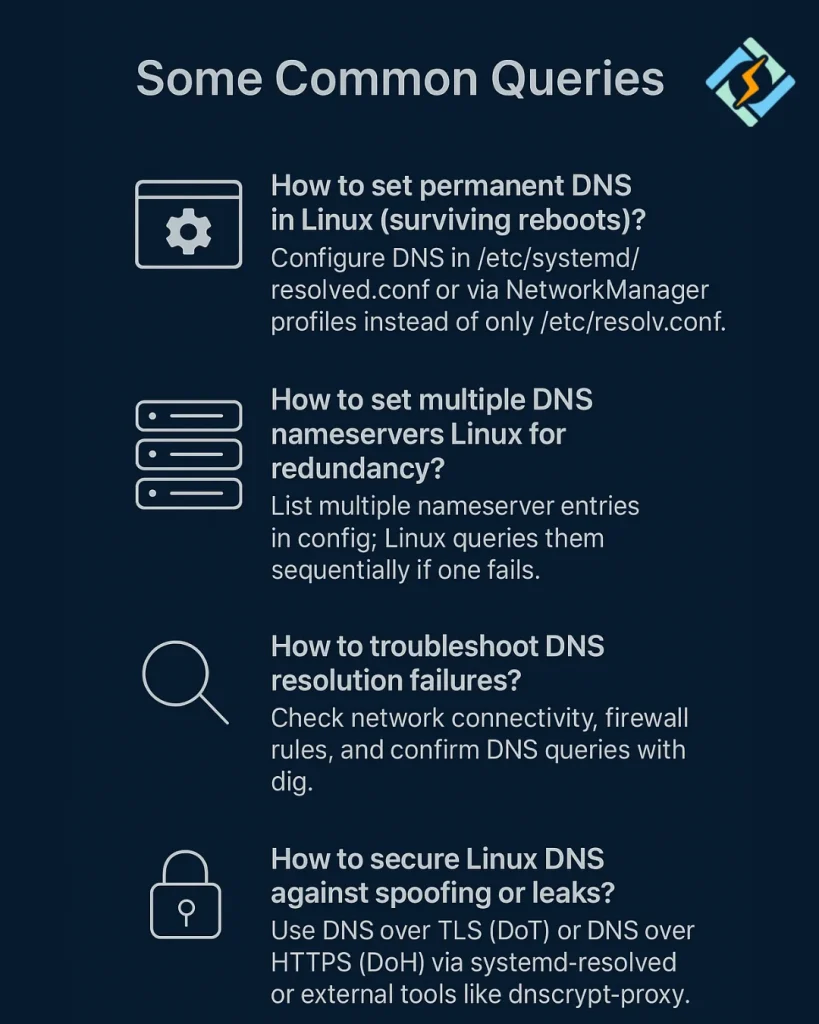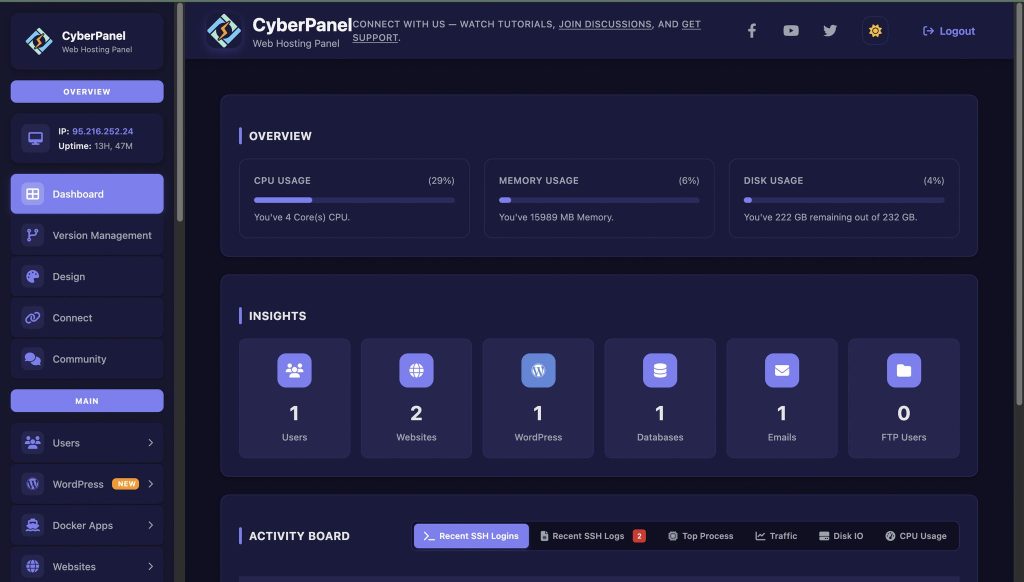Whenever you type a website address, your system takes help from DNS nameservers. These DNS nameservers translate that domain into an IP address. If you are using Linux, it is critical to manage and configure DNS nameservers. Whether you’re hosting a server, managing enterprise infrastructure, or simply troubleshooting connectivity issues, understanding DNS nameserver Linux is essential.
The Linux ecosystem gives administrators complete control over DNS resolution. It is done through tools like /etc/resolv.conf, systemd-resolved, and NetworkManager. This flexibility makes Linux the best environment for hosting DNS servers. Also, you can customize DNS queries. But, you may face challenges like how to check the DNS nameserver on Linux, what to do when DNS queries fail, or why the DNS nameserver’s default Linux timeout occurs.
Let’s learn together!
What is DNS Nameserver Linux?
The DNS nameserver in Linux is a server that translates human-readable domain names into machine-readable IP addresses. Linux takes help from nameservers to resolve queries whenever applications, browsers, or services need network access.
How to Configure DNS Nameserver in Linux?
You have to update /etc/resolv.conf to configure the Linux DNS nameserver. Also, you can manage settings via NetworkManager.
Check out how to add a DNS server via resolv.conf
Tech Delivered to Your Inbox!Get exclusive access to all things tech-savvy, and be the first to receive
the latest updates directly in your inbox.
Example: Updating /etc/resolv.conf
sudo nano /etc/resolv.conf
Add the following:
sudo nano /etc/resolv.conf
Save and exit.
How to Check DNS Nameserver Linux?
You can use these commands to check DNS nameserver Linux:
View /etc/resolv.conf
cat /etc/resolv.conf
Use systemd-resolve
systemd-resolve --status
With nmcli (NetworkManager)
nmcli dev show | grep DNS
Using above methods, you can confirm which nameservers are active and resolving queries.
Stepwise Guide to Check DNS Nameservers Linux
Here are the steps to check DNS nameservers Linux:
- Open a terminal.
- Run
cat /etc/resolv.confto see static entries. - Run
nmcli dev show | grep DNSfor NetworkManager configurations. - Use
dig google.comornslookup google.comto confirm resolution.
This process confirms both configuration and functionality.
How to Check DNS Nameservers Linux Connectivity?
Here is how you can test if your nameservers are functioning:
Query a domain with dig:
dig @8.8.8.8 example.com
Or with nslookup:
nslookup example.com
If results return quickly, the nameserver is working.

What is the DNS Nameserver Default Linux Timeout?
The DNS nameserver default Linux timeout is generally 5 seconds. It means if a DNS server does not respond, the system will wait 5 seconds before retrying or switching to another server. You can change this by editing /etc/resolv.conf and adding:
options timeout:2
This command will reduce the timeout to 2 seconds and improve speed.
Common Linux DNS Nameserver Issues and Fixes
| Issue | Cause | Fix |
|---|---|---|
| Slow resolution | Long timeout value | Reduce timeout in /etc/resolv.conf |
| DNS not found | Wrong nameserver | Replace with public DNS (8.8.8.8, 1.1.1.1) |
| Temporary failure | NetworkManager overwriting config | Use nmcli to set persistent DNS |
| Multiple DNS conflicts | Misconfigured DHCP | Disable conflicting services |
Some Common Queries You Might Ask

Role of CyberPanel in DNS Nameserver Management

CyberPanel is a next-gen web hosting control panel. It is built on OpenLiteSpeed, simplifies DNS management on Linux servers. CyberPanel takes your headache of manually editing system files, because it offers:
- Easy DNS zone and record management.
- Integration with nameservers for hosted domains.
- GUI-based configuration for primary and secondary nameservers.
- Faster troubleshooting without command-line complexity.
This makes it an excellent tool for admins running hosting environments.
FAQs
How do I set permanent DNS nameservers in Linux?
You can set it via nmcli or in /etc/systemd/resolved.conf.
What is the best DNS nameserver for Linux?
The best options are Google DNS (8.8.8.8, 8.8.4.4) or Cloudflare (1.1.1.1) for speed and reliability.
Can I use both public and private DNS nameservers on Linux?
Yes, you can use both. You can configure public resolvers alongside private enterprise nameservers for redundancy.
How can I debug DNS resolution in Linux?
You have to use dig +trace domain.com to follow resolution paths and detect failures at specific stages.
Final Thoughts!
To sum up, you have to configure and maintain a reliable DNS nameserver Linux setup. It is essential for uptime and performance. Linux provides you with multiple tools to keep DNS fast and stable. Linux provides you with full control to check the configuration to reduce default timeout delays and secure queries. Moreover, CyberPanel is here for hosting professionals to make DNS management simpler and more reliable.
Ready for faster, safer, and resilient Linux system? Start optimizing your DNS server today!



